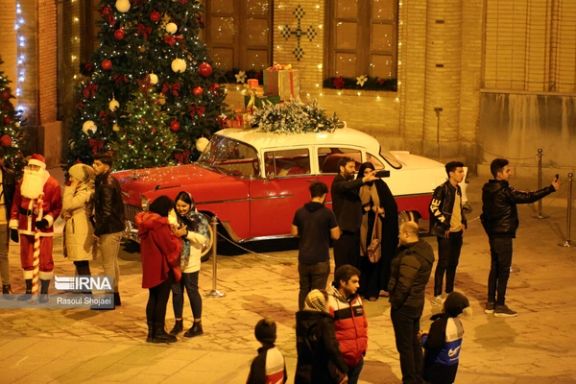Khamenei Attends Funeral, Hails Slain General’s ‘Indefatigable Jihad’
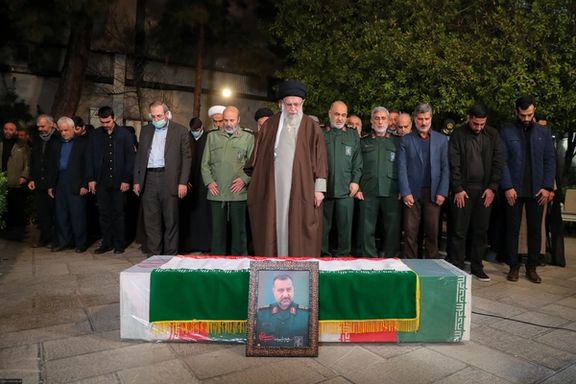
Iran’s Supreme Leader Ali Khamenei performed funeral prayers on Thursday for Razi Mousavi, a top IRGC commander who was killed in an Israeli airstrike in Syria.

Iran’s Supreme Leader Ali Khamenei performed funeral prayers on Thursday for Razi Mousavi, a top IRGC commander who was killed in an Israeli airstrike in Syria.
This gesture underscores the high regard Khamenei held for the slain commander, as he typically reserves funeral prayers for those in his inner circle, such as Qassem Suleimani, another key IRGC operative, who was killed in a targeted US air strike in Iraq in 2020.
On Thursday, Khamenei also met with the family of Razi Mousavi and hailed his years of “indefatigable jihad”.
Razi Mousavi (aka Seyyed Razi) was killed by a direct airstrike Monday, believed to have been launched by Israel. He headed IRGC’s ‘logistics’ and military coordination in Syria, getting weapons for and coordinating Iran-backed forces in Syria and Lebanon.
He had been active in Syria for more than 25 years, and had escaped multiple Israeli attempts on his life, according to reports in IRGC-affiliated media.
Iranian regime officials have vowed retaliation against Israel, with one general suggesting that October 7 Hamas attack was already an act of revenge for Soleimani’s killing.
President Ebrahim Raisi pleged that “Israel will face the consequences for Mousavi's death.” Foreign Minister Hossein Amir-Abdollahian stressed that Tel Aviv “must brace for a formidable countdown.”
Following the death of the commander, Iran's proxies in the region have intensified their attacks against Israeli and American targets. The US fleet in the Red Sea intercepted 17 drones and missiles on Tuesday.
Destroyers and fighter jets from the USS Eisenhower were forced to shoot down “twelve one-way attack drones, three anti-ship ballistic missiles, and two land attack cruise missiles” in the Red Sea –all fired by Iran-backed Houthis in 10 hours, according to the US Central Command.
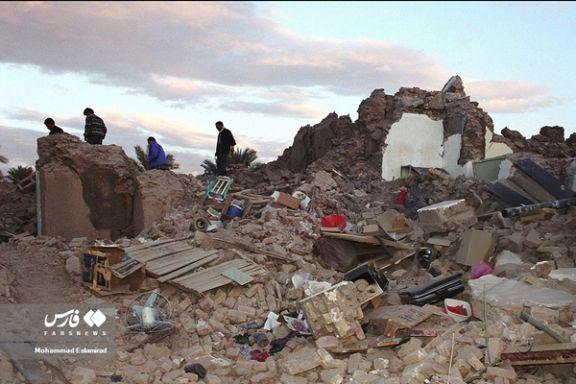
Twenty years since a 6.6-magnitude earthquake shook Bam city in southeast Iran, killing 34,000, fears of a repeat loom large amid Iran's dire corruption.
Earthquake mortality has been found to be higher in countries where corruption is high and in the past 30 years, 83% of all earthquake-related deaths have occurred in anomalously corrupt countries, according to a 2011 report.
In the aftermath of a natural disaster, deterioration of public institutions and a proliferation of inferior building stock can lead to more severe consequences.
As Iran is prone to natural disasters, the UN emphasizes the importance of adopting an effective long-term strategy but the details of mismanagement indicate that tragedies such as the tragedy of the Bam earthquake may repeat themselves.
Authorities reported the Bam earthquake death toll a massive 17 years after the tragedy. Until then, the numbers were estimates and not based on official data. The authorities in Bam resorted to “traditional” healing methods in the first nights following the earthquake, which the Rouydad24 website identified as “opium” being given to survivors.
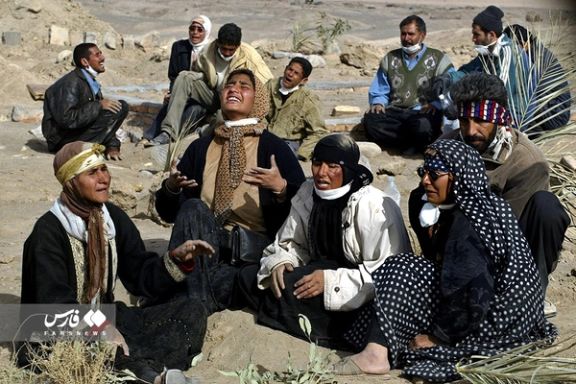
Further examples of poor management can be found in the book by Bijan Daftari, the head of the Iranian Red Cross Society (IRCS) Rescue and Relief Organization at the time of the earthquake. The authorities failed to locate the epicenter of the earthquake for hours, he said.
Many could not imagine earthquakes occurring in that region since it was the home of Bam City, a UNESCO World Heritage Site dating back to the Achaemenid era (6th to 4th centuries BC) that had stood strong for centuries. Furthermore, all communication with the city of Bam was disrupted, and the airport was temporarily inaccessible.
Municipalities, fire departments, hospitals, medical centers, and police stations in Bam city were destroyed, as well as key municipal officials, such as the mayor. In other words, virtually all of the city's infrastructure and vital arteries were destroyed.
The arrival of rescue forces took hours, and the only effective force for rescue was the remaining healthy victims, who, according to another IRCS official Jamal al-Dini, had not received sufficient training. Daftari also pointed out that the government made a mistake by involving the IRGC in the disaster management process.

“Given that the IRGC did not have a pre-defined plan for such cases, and no exercise had been conducted with other organizations, this decision made the response process difficult for some time,” Daftrai wrote in his memoir.
Iran experiences an average of 10,000 earthquakes per year, according to the UN which defines the only acceptable response to such disasters as long-term reconstruction, recovery, and risk reduction. It has been demonstrated that earthquake-resistant construction can prevent tragedies from occurring such as is found in Japan and Chile.
After a 7.3-magnitude earthquake in Ezgeleh southwest Iran in 2017, the Iranian authorities were once again inadequately prepared to deal with the ensuing crisis.
In a report titled "Crisis in Crisis Management'' in 2017, Shahrvand newspaper quoted Hamidreza Eskash, a crisis management lecturer and consultant, as saying: "Crisis management in Ezgeleh was no different from what happened in Bam. The number of facilities and resources had increased a bit, and we saw more helicopters in the sky.”
This statement is supported to a large extent by the report of the Housing, Road and Urban Development Research Center on the Ezgeleh earthquake. The report states that the destroyed structures were not suitable for seismic zones, the same thing which happened in Bam and its surrounding villages.
Mismanagement still prevails in logistics preparation and response to the crisis, which is the result of managers' ideological viewpoints. A memorandum of understanding signed with the Qom seminary to reduce natural disasters reflects the view of the leaders of the Islamic Republic.
With experts warning of a possible tremor in Tehran with a population of 11 million and located in a seismic region, any large earthquake will result in a disaster of epic proportions, unless the government begins to seriously prepare itself.
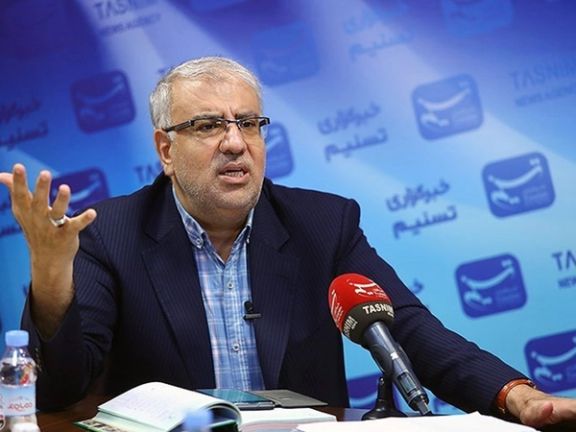
Iran has praised Iraqi officials for cutting oil output, saying the two countries had a common position regarding both OPEC and the wider OPEC+ grouping which includes allies such as Russia.
Iranian oil minister Javad Owji's comments came as he signed a number of preliminary agreements with his Iraqi counterpart in Tehran, state media reported.
"Iran and Iraq have a common position regarding OPEC and OPEC+. We thank the Iraqi officials for the voluntary cuts they implemented to improve (oil) prices. We have had negotiations about future issues related to OPEC and OPEC+," Owji said without giving any further details.
Iraq has said it will begin voluntarily cutting its oil output by 220,000 barrels per day (bpd) from the start of January to the end of March as part of a wider voluntary agreement by some of the OPEC+ group.
The agreements signed in Tehran on Wednesday include memoranda of understanding (MoU) to develop shared oil and gas fields, particularly Sindbad in Iraq and Khorramshahr in Iran, Iran's Borna news agency said without giving further details.
Owji said he was hopeful that the development of shared fields would begin soon.
"We reached acceptable agreements on the renovation of Iraqi refineries by Iranian experts and a committee to follow up on this issue has been created," Owji added.
(Report by Reuters)
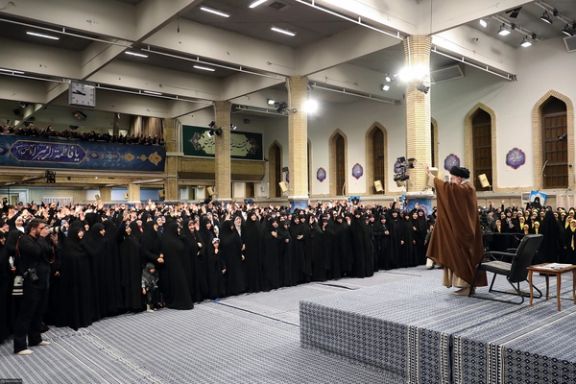
Iran's Supreme Leader has told an all female audience "you can play an important role in the elections" with voter turnout expected to be as low as 15 percent.
In a direct appeal for the upcoming March elections, Ali Khamenei said, "In the home, you play the most important role. Mothers can play a role in educating their children and spouses about the importance of being involved in the electoral process.”
Khamenei's hardliner supporters have used various methods to prevent other regime factions from competing in parliamentary and presidential elections since 2020.
The same tactic is being used for the March 1 legislative elections, and voters have lost interest in what they see as Islamic Republic's electoral machinations. Many do not see if going to the ballot box would make any difference to their futures.
Khamenei also stated that women have a greater capacity for details and a “better ability to recognize people and strategies ... The women are better able to identify the most qualified candidates than the men.”
In what seemed like a premeditated bid to engage a disenfranchised female population amidst the Women, Life, Freedom uprising as elections approach, the Iranian dictator added that, “A woman may hold any type of position, including managerial, governmental, and parliamentary positions. Meritocracy is the criterion for selection”.
However, cementing what he sees as women's main function, he added, “There is, however, a crucial requirement that women won’t be ‘deprived’ of that important and fundamental ‘feminine task’, i.e. housekeeping and childbearing ... Fortunately, there are some men who are willing to ‘assist women’, with housekeeping.”
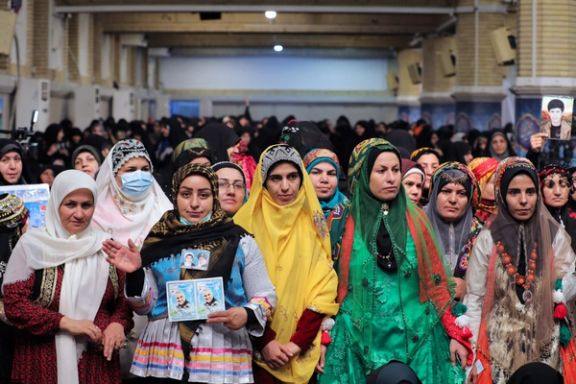
While defining “housekeeping” as a “woman's job” and saying some men “happily help women with that”, he also said, “We should not say housekeeping is women’s job.”
The inconsistencies present in just a few minutes of Khameni's speech may stem from his attempt to use modern concepts of equality to superficially appeal to women, his sole audience at Hosseiniyeh, after the 2022 women-led uprising sparked by the death in morality police custody of Mahsa Amini.
His emphasis on meritocracy comes at a time when, according to the Global Economic Forum's 2023 Global Gender Gap Report, Iran ranks 143rd out of 146 countries in terms of gender equality.
"Pakistan, Iran and Afghanistan are at the bottom of both the regional and global ranking tables," wrote the report.
Also in the Women’s Workplace Equality Index, published by the Council on Foreign Relations, Iran is among the 5 bottom-ranked countries regarding women’s workforce equality, alongside Sudan, Qatar, Syria and Yemen.
After praising women's progress in a variety of scientific and artistic fields, he emphasized the importance of revolution and Islamic values as decisive factors. In praise of the hijab, he said: “Hijab doesn’t mean discrimination and exclusion, but rather safety.”
In the meantime, the new division of the regime that enforces the hijab is violating the privacy of citizens by searching their personal belongings and imposing surveillance on them to take away their freedom of choice in how they dress.
Only in Iran and neighboring Taliban-controlled Afghanistan is wearing a hijab for women still mandatory.
The fact that these hijab enforcers are in plain clothes without permits or documents increases the possibility of criminals exploiting the situation. The harsh behavior of these agents has led to nationwide protests last year that lasted for months.
Mahsa Amini, 22, died in the custody of the morality police last September sparking the biggest uprising in recent history. A similar incident occurred this year with Armita Geravand, a 16-year-old student who was severely injured by Tehran's hijab police. She died while in hospital in October.

Argentinian filmmaker and former pilot Enrique Piñeyro was forced to remove the image of Mahsa Amini from his Boeing 787 to land in Egypt delivering aid to Gaza.
The social activist unveiled the livery to raise awareness over the crisis in Iran following the "Woman Life Freedom Movement" movement last year which challenged the regime and its religious authority.
The nationwide protests were sparked by the death in morality police custody of 22-year-old Mahsa Amini in September 2022, now an icon of the uprising.
“To fly a humanitarian cargo to El Arish for Gaza, the Egyptian government would not allow the livery with the photo of Mahsa Amini and the legend,” Piñeyro wrote on X.
The Boeing aircraft also featured an image of Iranian footballer Amir Reza Nasr Azadani and the following slogans: “No woman should be forced to cover her head. No woman should be killed for not covering her head. No man should be hanged for saying this”The footballer was sentenced to 21 years in prison after he was arrested during the protests.
Enrique Piñeyro also helps Ukrainian refugees get to safety, using a Boeing 787 that he owns and operates as part of Solidaire, his charitable organization.
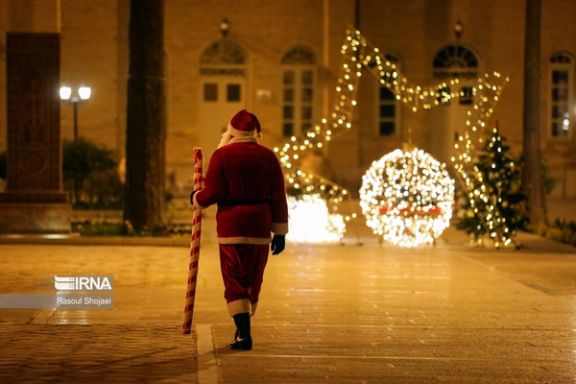
Hundreds of Iranians rushed to an Armenian church in Esfahan on Sunday to celebrate Christmas, which has become popular among Muslims over the past two decades.
Videos posted on social media depict a large crowd, mainly composed of young non-Christians, trying to enter the historic Vank Cathedral. This cathedral is a major tourist attraction in the city, but on that day, it had to close its doors to the public an hour earlier than usual. Later, the police used force to disperse the youths who were singing and dancing in the street outside the church.
There was no Christmas service held at the cathedral, because unbeknownst to those who had gathered outside, Armenians celebrate the birth of Christ on January 6, following the tradition of Eastern Orthodox Christians.
Crowd trying to force doors of Vank Cathedral open and chanting “Open the door, Jesus!”
For several years, pundits have suggested that the rising popularity of Christmas in an Islamic country like Iran is a collective response to the government's attempts to promote Shiite mourning ceremonies over the celebration of happiness in society. This has also led to a growing disregard for ancient Iranian festivals such as Nowruz (New Year), Yalda (Winter Solstice Festival), and Charshanbeh Souri (end of year bonfire festival), all of which are traditionally associated with joyous celebrations.
“What is important to people is life and happiness. [Celebration of Christmas and other western holidays] is…a reaction to traditional [Shiite] culture,” philosopher and university professor Bijan Abdolkarimi told local media in 2020.
Like Valentine’s Day and Halloween, the popularity of Christmas has been on the rise among Muslim Iranians in the past two decades.
Photos published by Iranian media this year show shop windows with beautifully decorated Christmas trees, Santa Clauses, and Christmas accessories, as people, even women in long black veils and their children, taking selfies with the decorations.
Police using violence against a man watching young people’s dance outside Vank Cathedral
Arguing that celebration of Christmas by Muslims has nothing to do with seeking the truth of Christianity or the actual celebration of the birth of Christ, Abdolkarimi called the reaction of the Iranian society “a means of expressing disgust and hatred” of the prevalence of religious dogmatism and control.
For hundreds of years, Esfahan, Iran's third-largest city after Tehran and Mashhad, has been home to a large Armenian community and over a dozen historical churches.

Like some other historical Armenian and Assyrian churches in other parts of Iran, the Vank Cathedral, established in 1606 in Esfahan’s historical New Julfa District, is open to the public on certain days.
Most contemporary churches, however, do not open their doors to non-Christians, particularly during worship, for the fear of being accused of encouraging conversion of Muslims to Christianity. Conversion from Islam could bear a death sentence to the convert.
Armenians are the biggest non-Muslim religious minority in Iran. There are around 120,000 Armenian and Assyro-Chaldean Christians in Iran. Unlike converts to Christianity, they enjoy some degree of freedom of worship and have their own representatives in the parliament.
Importing Christmas accessories, mainly from China, has been banned for several years and what is on offer in shops is illegally imported. Iranian media have for several years reported that Muslim families buy most of these commodities.
“There is an unwritten rule [about selling Christmas accessories] ... They may say that it is preaching Christianity…We are always in doubt. We do not know what is legal and what is not,” the owner of a shop in Tehran told Ensaf News when asked about getting into trouble for selling Christmas accessories.
